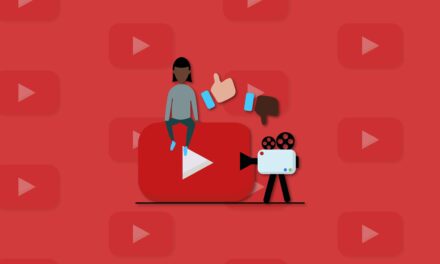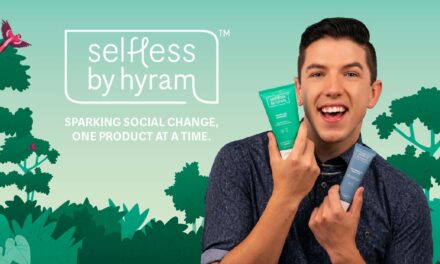Audiences don’t like to be sold to. After all, ad-free streaming services attract viewers because they don’t want to watch commercials. So, you think if you participate in an affiliate program, your audience will leave. It’s just not worth it to your content business.
But that doesn’t have to be the case. You can create a “non-sleazy” affiliate program with this helpful advice from Michelle Martello, digital strategist and founder of Minima Designs. She shared how during her Content Entrepreneur Expo (CEX) presentation.
“I love affiliate marketing as an additional revenue stream,” she says. “This is about 30% of my income right now.”
Michelle says content entrepreneurs don’t need large audiences to reap the benefits. “If people listen to you, you can sell stuff. You can make a good amount of money selling products you truly believe in.”
In addition to earning money, Michelle’s affiliate marketing has led to invitations to events, networking opportunities, and speaking engagements. However, through every affiliate program experience, she keeps the need to protect her newsletter audience at the forefront of her mind.
Identify affiliate marketing opportunities
A good place to start is to think about the products and services you already use. What software do you use? What programs have you taken? What products have you tried and loved?
Go to their websites and scroll down to the footer. Look for the words “partner” or “affiliate” program. If they don’t have an obvious link, contact the business because they may have an affiliate program but don’t advertise it publicly.
You also should visit affiliate network or aggregation sites. Michelle cites Impact.com, Commission Junction (www.CJ.com), and ShareASale.com. And don’t forget to ask your fellow entrepreneurs if they have an affiliate or referral program.
It is important to understand the compensation structure when you make affiliate marketing a revenue stream. You generally earn a commission – a flat rate or a percentage of the sale. It could be a one-time framework – make a sale, get a commission. Or the commission could be earned by tiers (achieve predetermined sales levels) or recurring (every time they buy or renew the product).
You also should know how the company tracks and gives credit to its affiliate partner. For example, is it the buyer’s first or last click that determines who gets the commission?
Payment usually occurs 30 to 90 days or more after the sale to account for returns and refunds.
Starting as an affiliate ambassador
Being an affiliate isn’t a passive income strategy, Michelle says. You must have a plan and work to become an expert so people think of you first when considering a purchase.
You also must foster an atmosphere to establish trust with your audience so they see your recommendations as reliable. How do you do that? Share the real pros and cons of your experience with the product or service so they can see if it’s right for them.
“I want people to make an informed decision,” Michelle says.
Make it easy for your audience to sign up or buy the product or service using your link. Michelle suggests using the WordPress PrettyLinks plugin or a link shortener like Bitly to make friendly URL versions.
Not only do these help your audience, but they also help your business because you can track them easily and change the linked affiliate URL if necessary without changing the promoted URL.
Michelle recommends creating a spreadsheet of your affiliate programs to track estimated and actual payments.
The tracker should also include the links so you can test them regularly to ensure they still work. Michelle suggests you create unique affiliate links for your channels and referral sources to better understand what works well and what doesn’t work at all.
You can also analyze this data to identify high and low seasons for the affiliate program to help you plan and schedule your promotional content more effectively.
Being a transparent affiliate promoter
Enterpreneurs who operate non-sleazy programs don’t hide that they earn revenue through affiliate programs. When sharing content with affiliate links, say that they’re promotional. Add a disclaimer to your blog, newsletter, and social media that reveals you receive compensation if your audience makes a purchase.
Michelle says you also shouldn’t go for the hard sell or promote products that aren’t a good fit. Instead, develop an affiliate program that gives more to the audience. Take the time to answer their questions. Create a bonus training for pre- or post-sale to help them understand and use the product or service.
Make it easy for the audience to opt out of these offerings by placing an opt-out notice at the top or bottom of the emails. Send them to an opt-out landing page that lets them indicate they’re not interested in the offer (and remove them from future content about this offering.)
Schedule time with the brand’s affiliate account managers and ask how you can help them sell more. Partner with other creators for joint promotions, such as webinars or Instagram Live. Think
Don’t copy other people’s sales copies. Make the offer sound like it’s coming from you. You could even create a custom bonus for people who buy through you. “People want to know what you use to be successful,” Michelle says.
Share real images, stories, and testimonials of how people use the product or service. Give your audience a behind-the-scenes look, and don’t be afraid to include the messy bits of making stuff.
Going for the long game
To accommodate bigger affiliate programs, you should plan a proper launch. Develop a promo calendar with emails, social posts, and graphics, and schedule time to implement it. (You also should create an overall promotional calendar so you don’t overwhelm your audience with affiliate offers.)
Create a resource or shop page on your site where you give visitors quick access to a variety of products. Incorporate the affiliate link in your welcome-to-my-business email sequence, website footer, and link-in-bio pages.
You can also incorporate the affiliate promotion in your blog content. Michelle suggests targeting keywords, such as “pros and cons” of product, “best tool for [insert year], and “how to use [product].” Develop roundup posts about similar products.
YouTube videos, particularly tutorials and before-and-after content, can also work for discoverability. These videos also can be repurposed for social channels. Just don’t forget to include the affiliate link in the description.
About the author
Ann regularly combines words and strategy for B2B, B2C, and nonprofits, continuing to live up to her high school nickname, Editor Ann. An IABC Communicator of the Year and founder of G Force Communication, Ann coaches and trains professionals in all things content. Connect with her on LinkedIn and Twitter.




![13+ Tips To Be a Better Content Entrepreneur [Lessons from Creator Economy Expo]](https://www.thetilt.com/wp-content/uploads/2023/05/502_0516-440x264.jpg)





